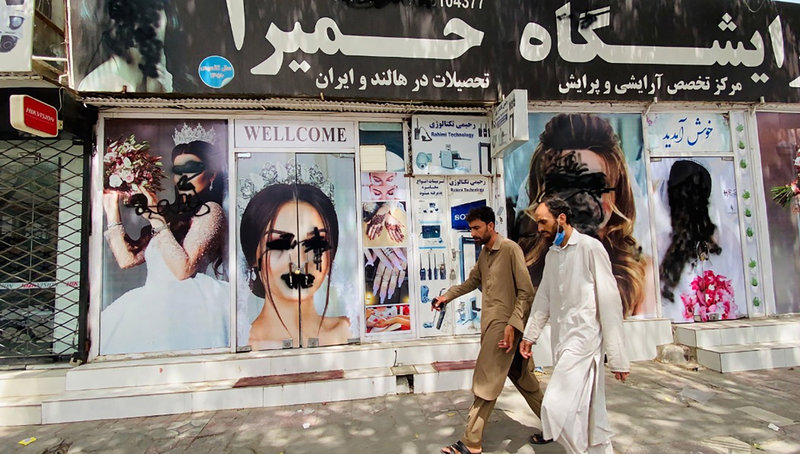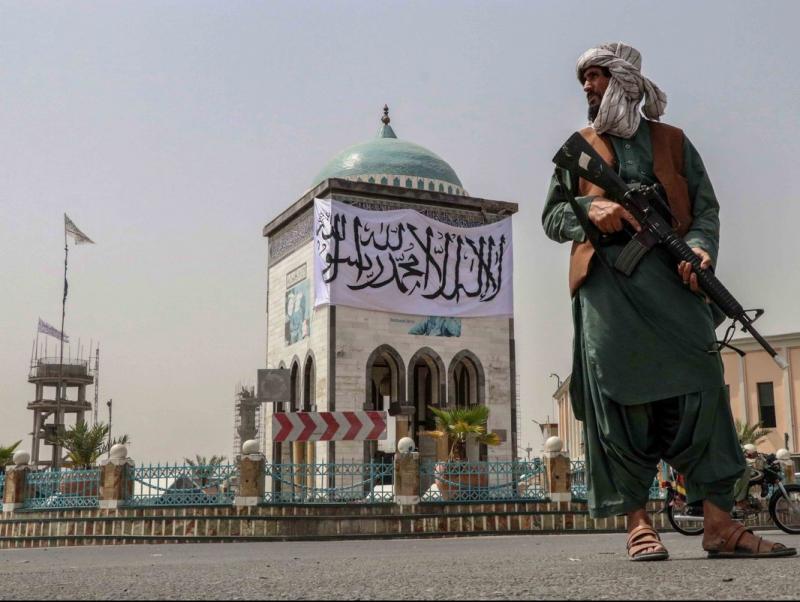In the hands of terror
The hasty withdrawal of the United States from Afghanistan leaves the way open for the main Islamist groups in the country
The departure of the United States from Afghanistan has left the way open for the main terrorist groups in the country. The Taliban have seized power after gaining ground in recent times, but the brutal attack on Kabul airport by Islamic State (IS) – which killed over 200 people – shows that there are other Islamist groups also striving for power, and that include IS and Al-Qaeda.
The Taliban emerged during the resistance against the Soviet Union after they invaded the country in 1979. Originally made up of Pashtun Afghans, they came to power in 1996 and established a Sharia-inspired regime that was extremely harsh on women in particular. While in recent weeks the Taliban have sought to present a more moderate image to the international community, the reality is that many women no longer take to the streets unless accompanied by a man, and others have stopped working out of fear of reprisals.
Taliban in power
From 1996 to 2001, when they were ousted from power by an international coalition led by the US, the Taliban banned girls over the age of 10 from going to school. What’s more, the Taliban’s restrictive version of Islamic law is something they share with IS and Al-Qaeda, and all three jihadist groups are followers of the Wahhabi branch of Islam. The stated aim of the Taliban is to build an emirate in Afghanistan and they have rarely set their eyes on expanding or sowing terror outside their borders.
Meanwhile, IS in Afghanistan, or more specifically Islamic State of Iraq and the Levant–Khorasan Province (ISIL or ISK), is considered the most violent group operating in the country. The most brutal attacks in recent years, such as the attack on a girls’ school or another on a maternity ward, bear the stamp of this hardline terrorist organisation. This new franchise of the group was born in Afghanistan following IS’s push for the conquest of Syria and Iraq in mid-2014. However, as sworn enemies of the Taliban, the latter have limited the spread of ISIL, relegating them to the eastern part of the country, specifically Nangarhar province.
Originally made up of former Iraqi soldiers, ISIL is a splinter group of Al-Qaeda and, due to the global projection achieved by the terrorist organisation formerly led by Osama Bin Laden, they were able to recruit thousands of fighters around the planet. In Afghanistan, they have been fed by Taliban deserters looking for a more radical organisation to join and especially by Pakistanis and Uzbeks. The recent suicide bombing at Kabul airport, where thousands of people were waiting in the hopes of fleeing Afghanistan, was a warning from Islamic State to its rivals in the country.
The goal of this organisation is to regain the power and hegemony they attained in Syria over seven years ago, as well as further territorial expansion and conquest across the region, which puts it in conflict with Al-Qaeda. In fact, Islamic State can be seen as a more modern version of Al-Qaeda and has gained a large number of followers thanks to the elaborate image it has presented on social media since its inception.
Islamist resurgence
The withdrawal of western troops now raises fears of a resurgence of these two Islamist factions. The latest figures indicate that Islamic State could have around 2,000 men on Afghan soil. At its height, ISIL could count on some 3,000 fighters, but those numbers were curtailed due to the fighting with US, Afghan and Taliban forces. For its part, Al-Qaeda could have about 600 men, but all indications are that this number is likely to increase thanks to the recent Taliban victory.
The future of Afghanistan with the presence of these three terrorist groups on the ground is troubling and uncertain. The Taliban are in control of the country, and after their agreement with the United States they say they have broken all ties with Al-Qaeda.
However, the Taliban-ruled Afghanistan before the invasion of the international coalition in 2001 was a base for Al-Qaeda and its former leader Osama Bin Laden. It will be difficult to undo the ties that have held the two organisations together in the two decades since. For now, the two groups are maintaining their distance from each other.
However, a struggle for power and territory between the three terrorist groups seems inevitable, and the near future will more than likely be marked by a confrontation between the ruling Taliban and the insurgency that ISIL now represents. More than 40 years after the Soviet invasion, Afghanistan is now facing a new spiral of violence that will, as always, mainly affect a civilian population that has been punished by conflict for decades.
international afghanistan
Those Spain left behind
In the final days before US forces definitively left Afghanistan and handed over Kabul airport to the new Taliban government, Spain’s defence minister, Margarita Robles, admitted that Spain would not be able to evacuate all the people the government would like before the August 31 deadline. “We will evacuate as many people as possible, but there will be people who will stay there for reasons that do not depend on us, but on the situation that exists,” she told the Spanish media. Robles was referring to Afghans who worked with Spain and who fear retaliation by the Taliban.



